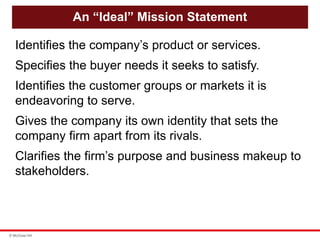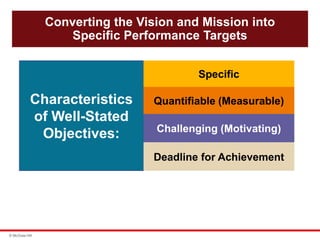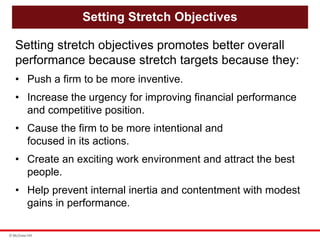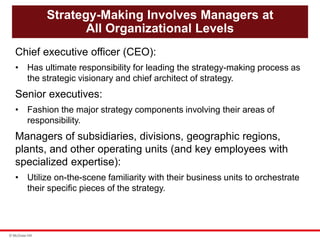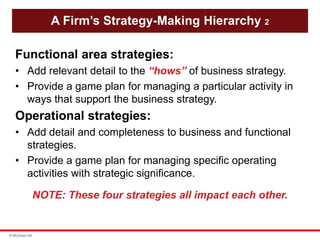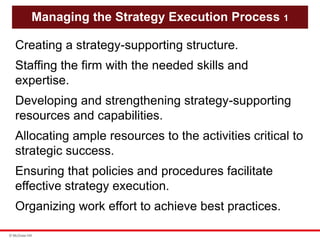This document discusses the strategy-making and execution process. It covers developing a strategic vision, mission, objectives and core values. It then discusses crafting a strategy, executing the strategy, and evaluating performance and making adjustments. The strategy process involves managers at all levels and coordinates corporate, business unit, functional and operational strategies. Effective execution requires the right structure, resources, culture and leadership to achieve objectives.










